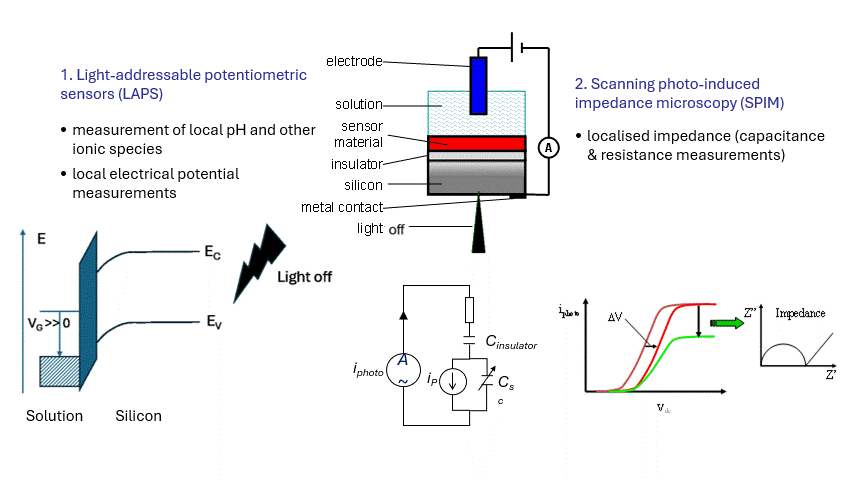Electrochemical Sensors Group
Our research focuses on biosensing and electrochemical imaging.
Light-Addressable Potentiometric Sensors (LAPS) and Scanning Photo-induced Impedance Microscopy (SPIM)
LAPS and SPIM are based on photocurrent measurements at electrolyte/insulator/silicon (EIS) field-effect structures. A focused light beam is scanned across the EIS structure exciting local photocurrents. Local changes in the surface potential are measured as a shift of the photocurrent-voltage curve along the voltage axis (LAPS) and can be used to image ion concentrations. By recording the maximum photocurrent in inversion, the local impedance can be measured (SPIM). Take a look at the highlights of this research.
The principle of LAPS and SPIM
Photoelectrochemical imaging (PEI)
Thin layers of semiconducting oxides such as hematite can be used for PEI of faradaic currents. In physiological salt solutions, the current is generated by oxidising hydroxide ions. Click on the image to see how we imaging photocurrents.
Principle of imaging faradaic photocurrents with PEI
We have used both LAPS and PEI for the imaging of live cell imaging.
Disposable biosensors for the detection of enzyme activities
Biosensors based on the enzymatic degradation of thin polymer films have been developed. Film degradation in the presence of an enzyme is monitored using impedance and Quartz Crystal Microbalance. Click on the image to find out more. 



